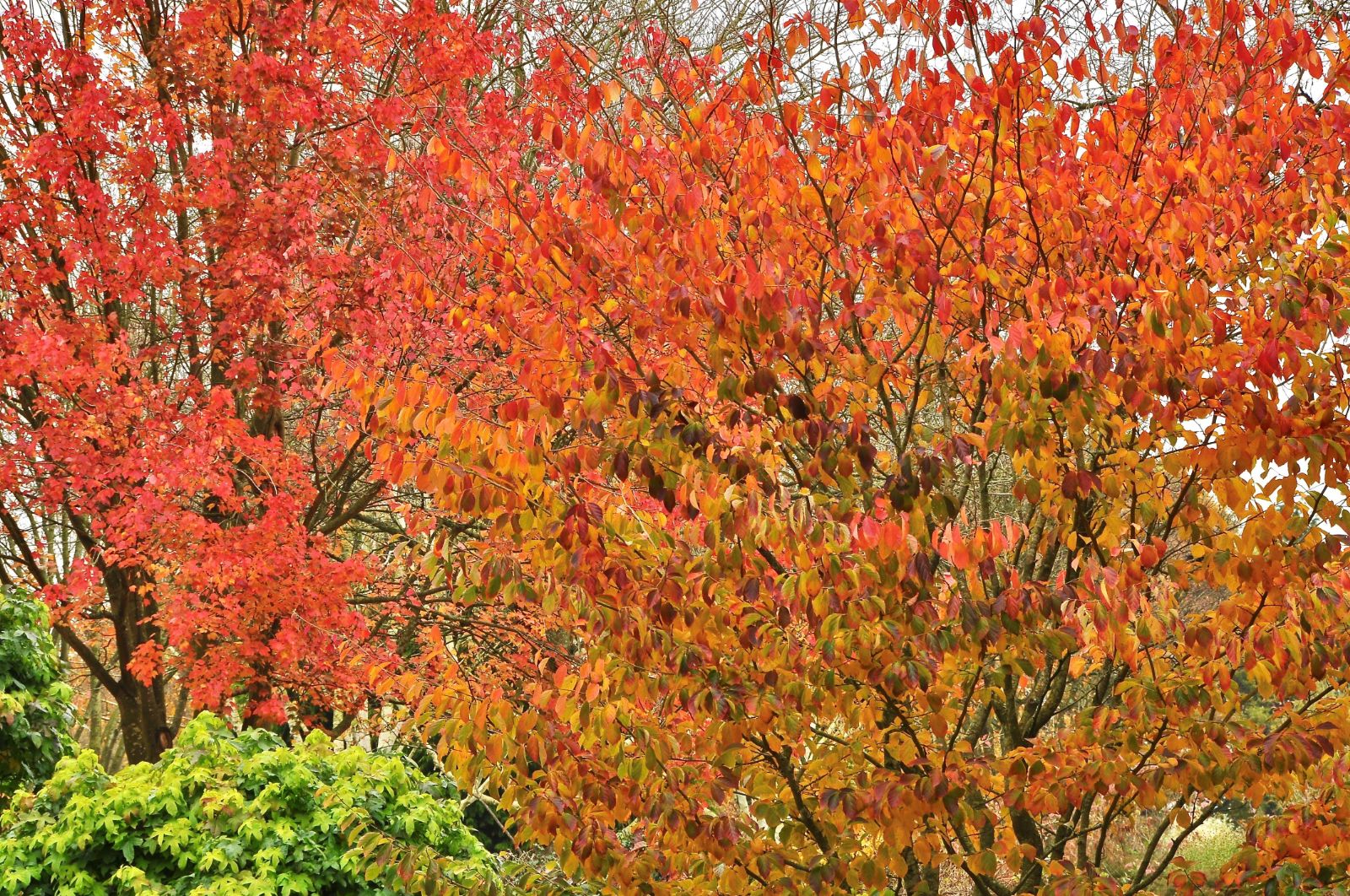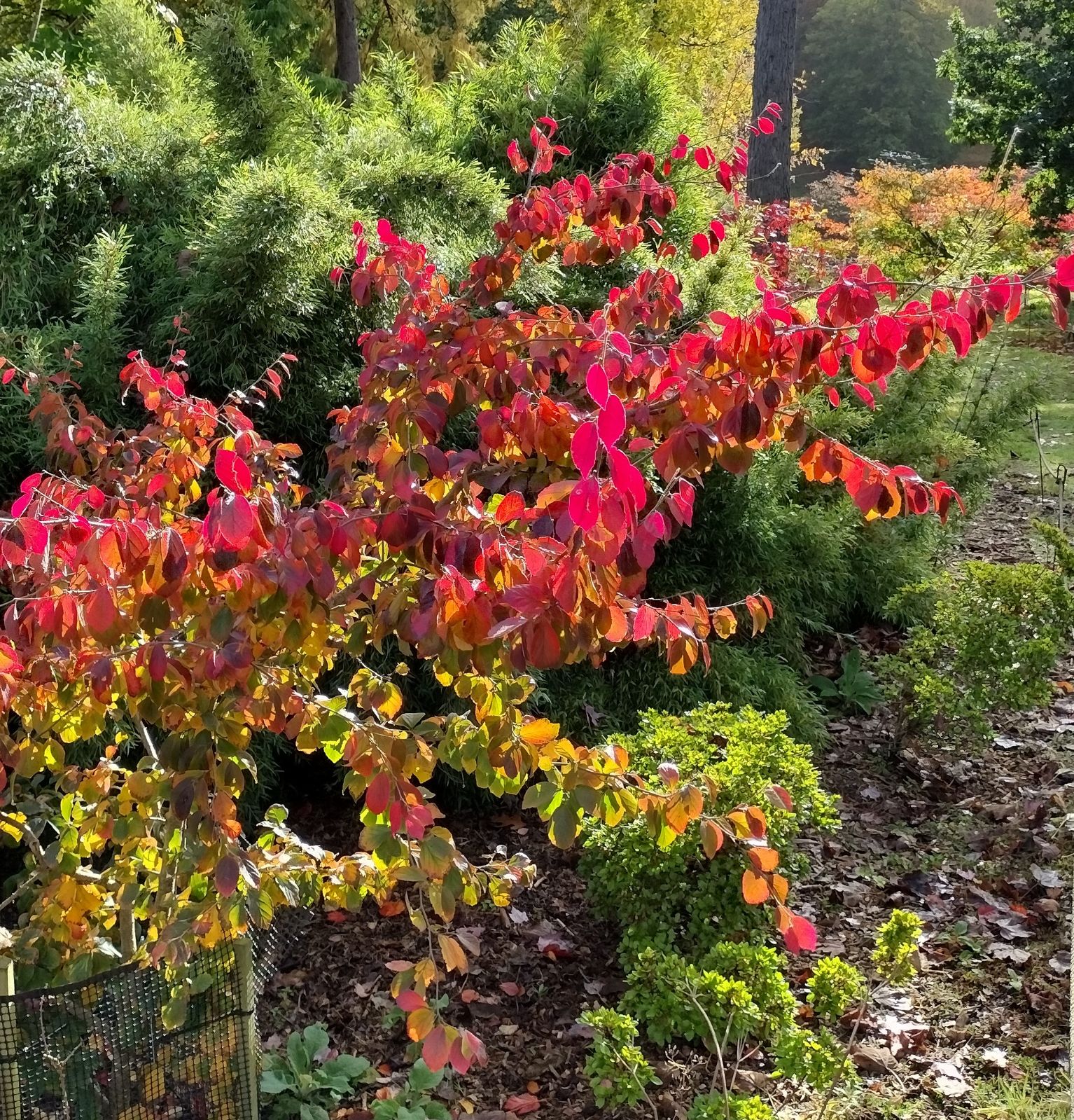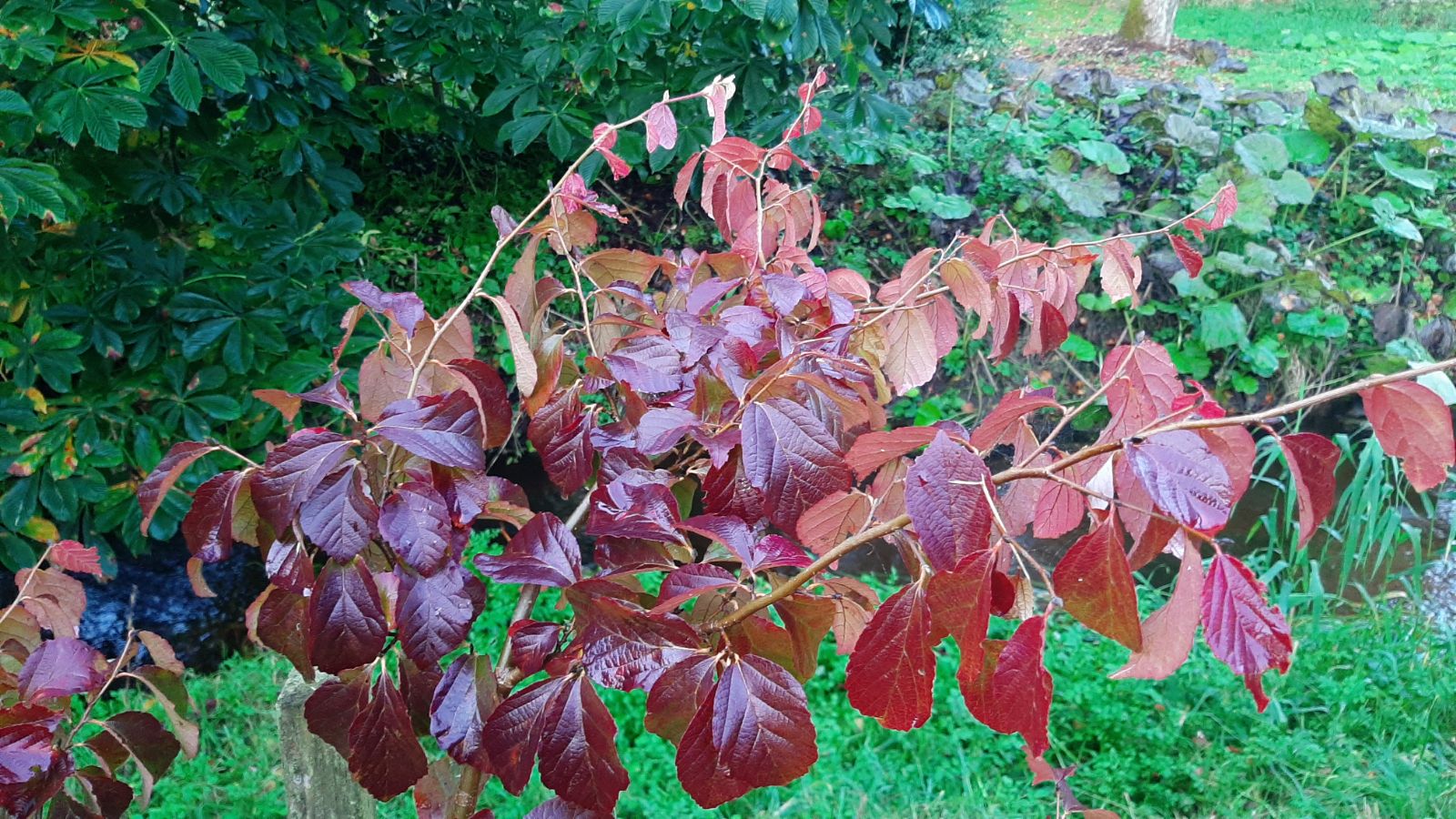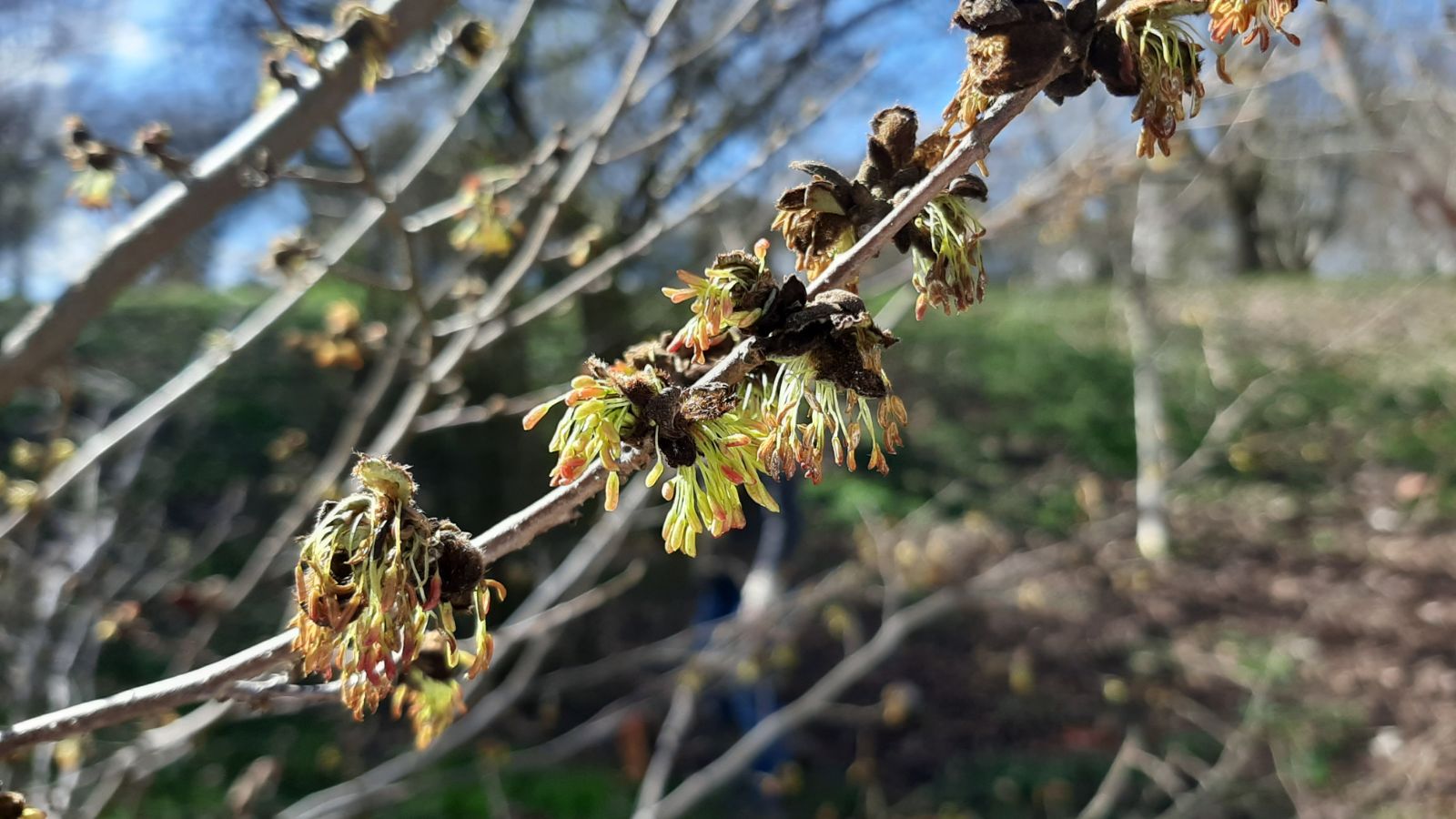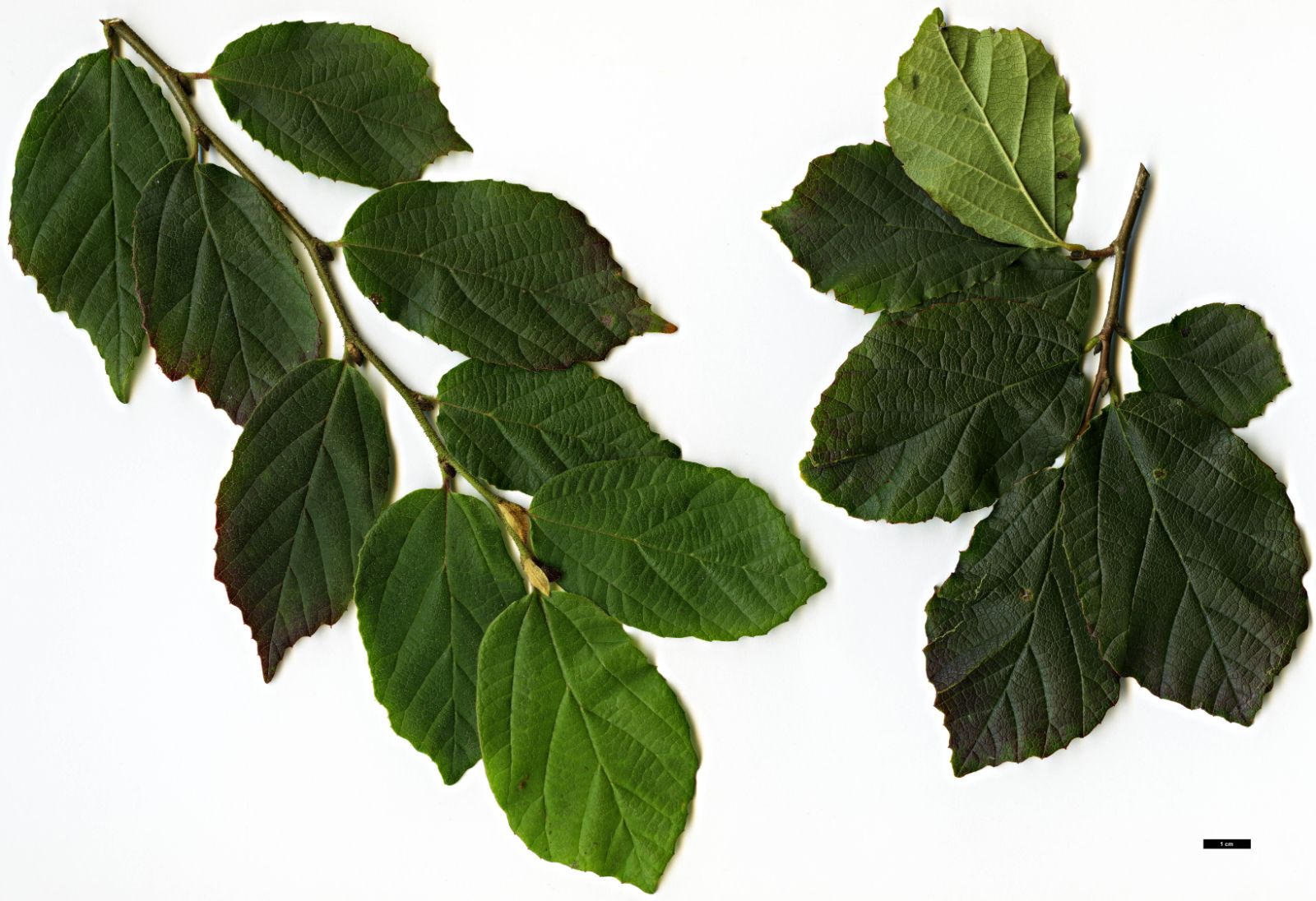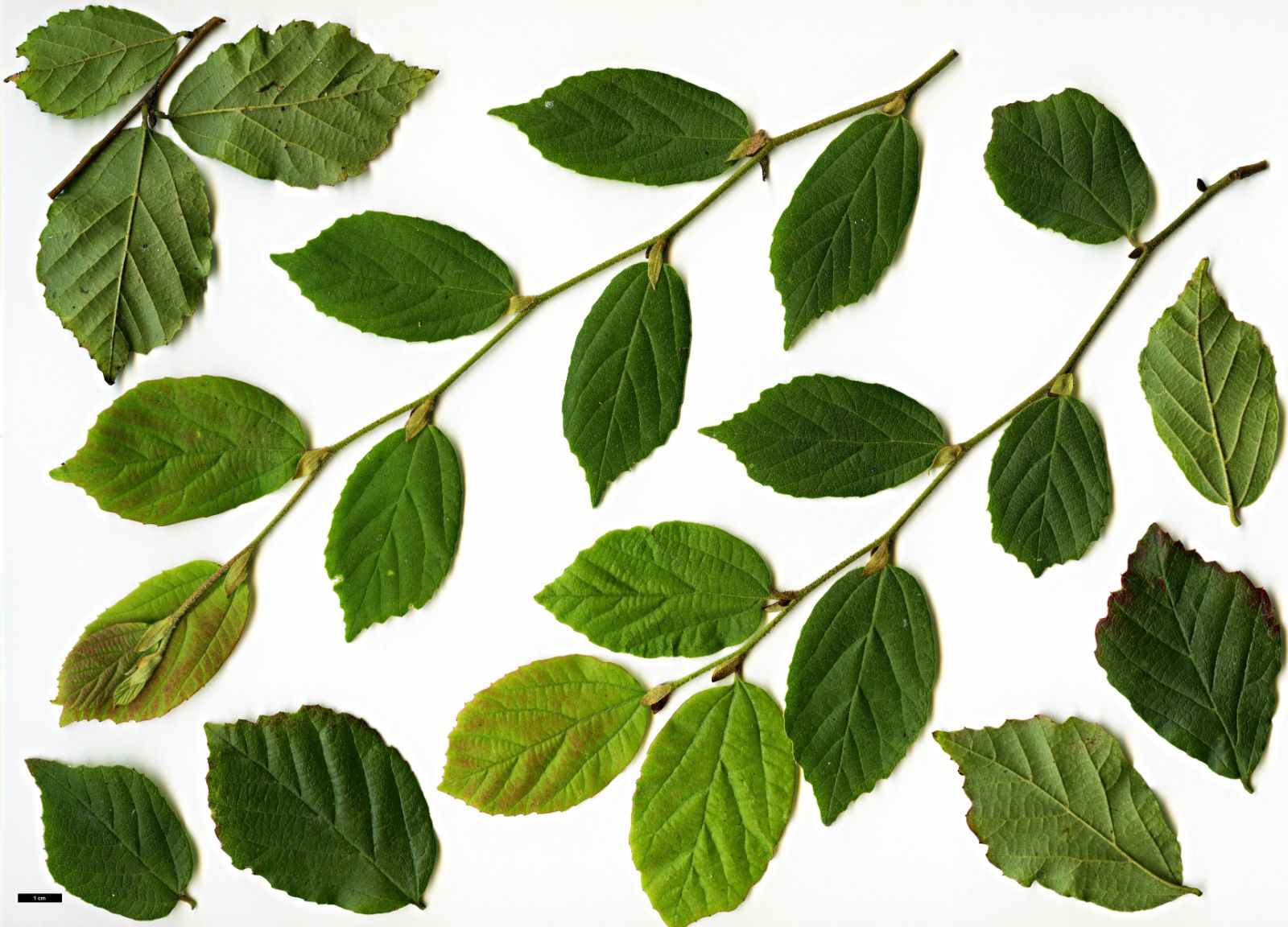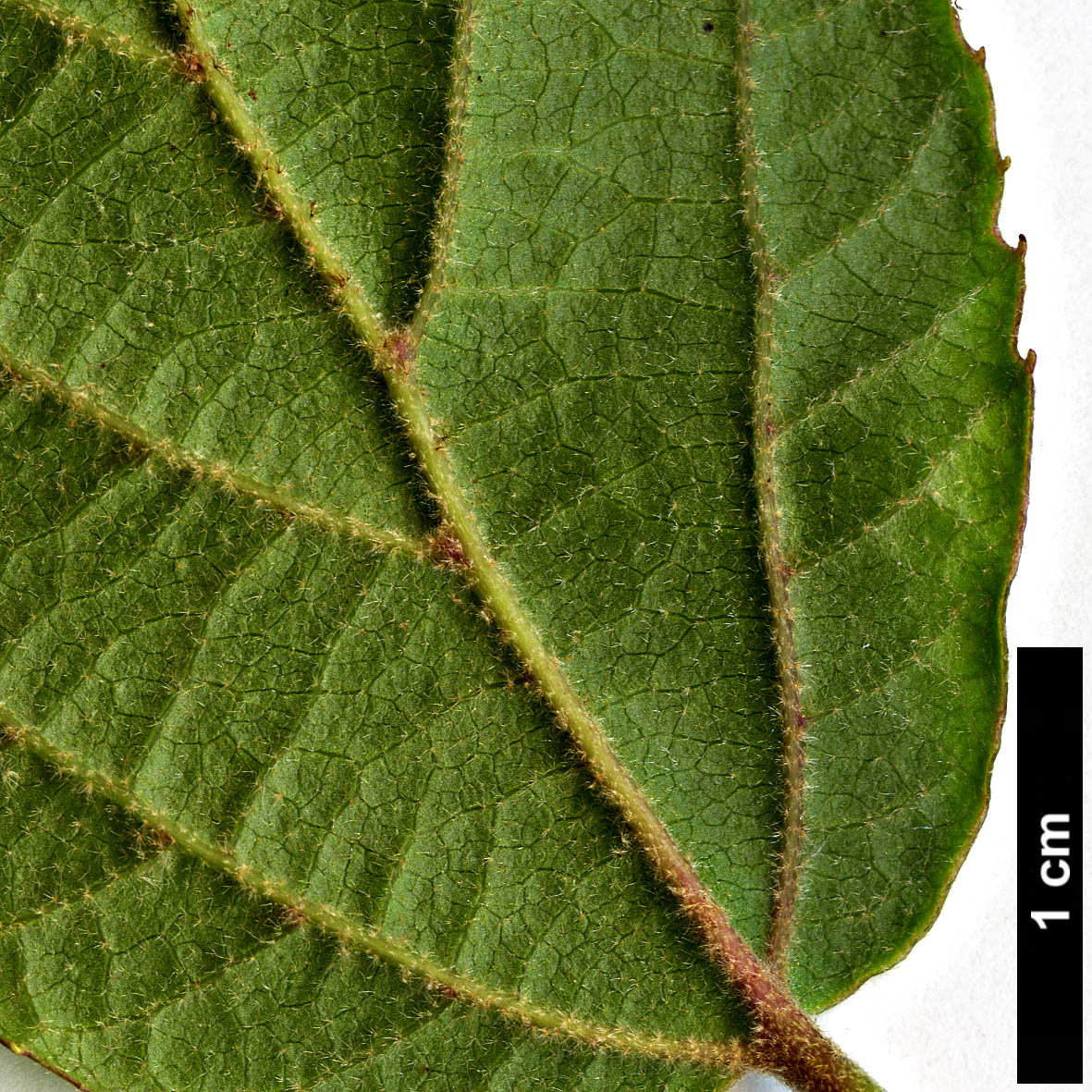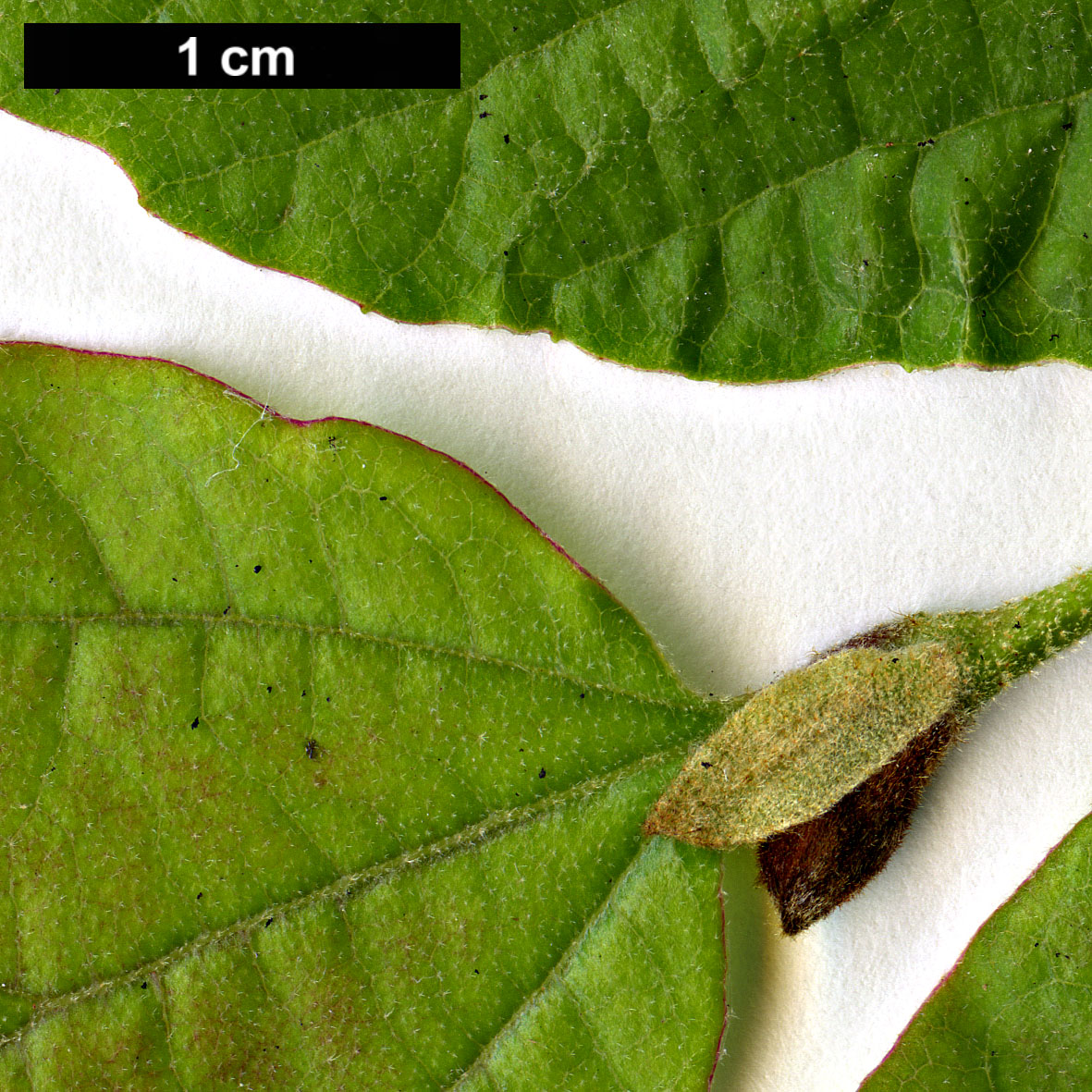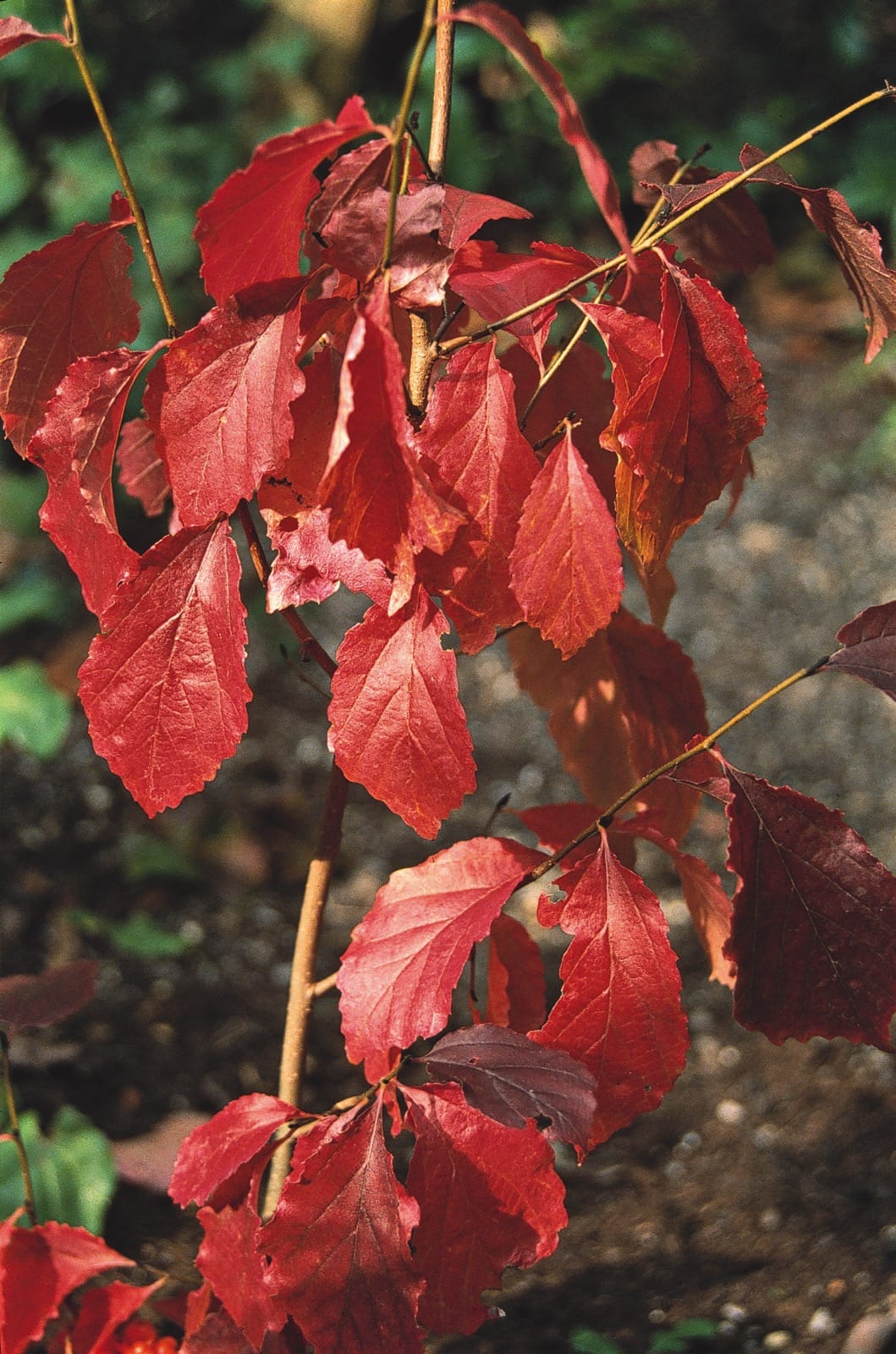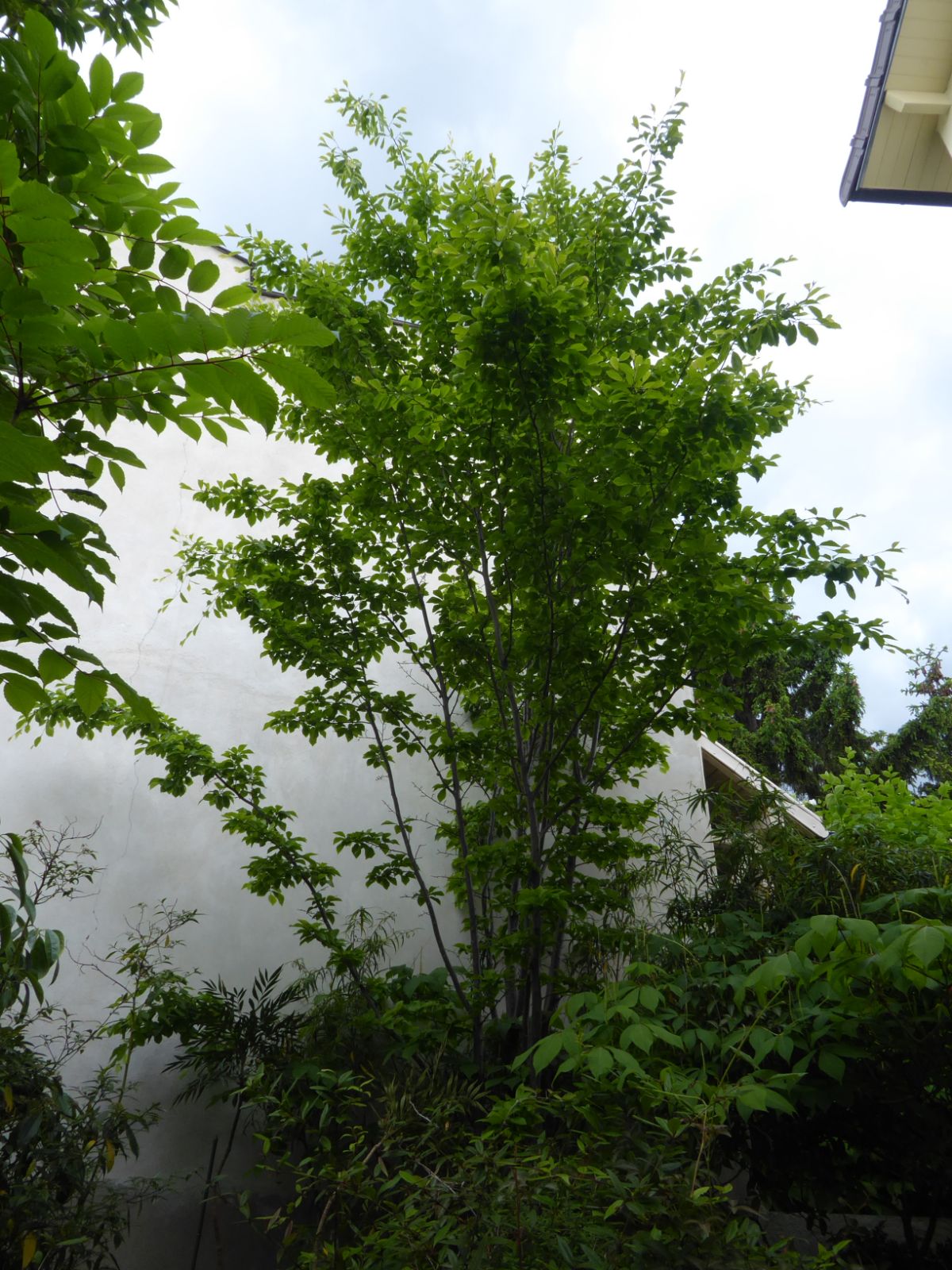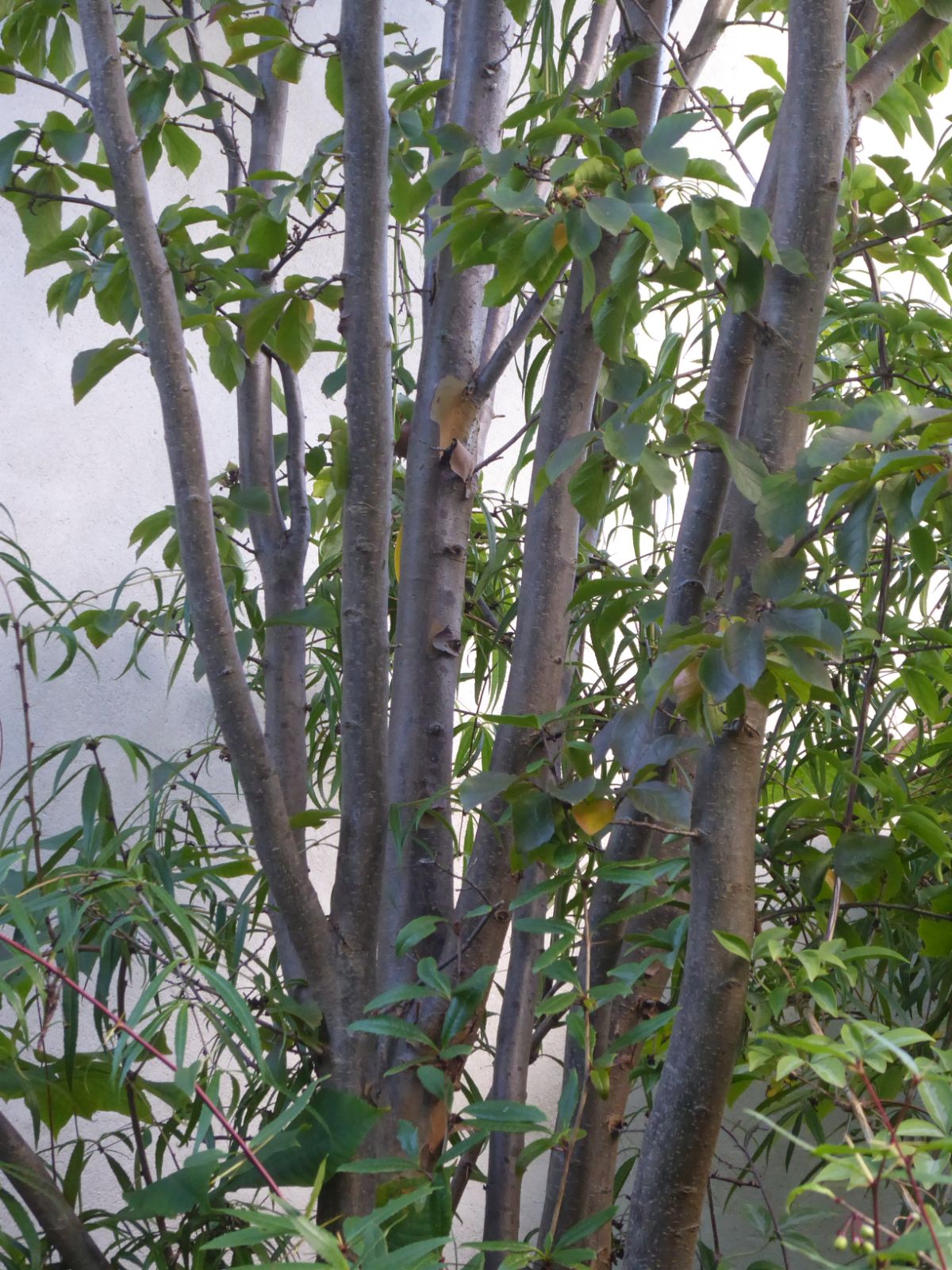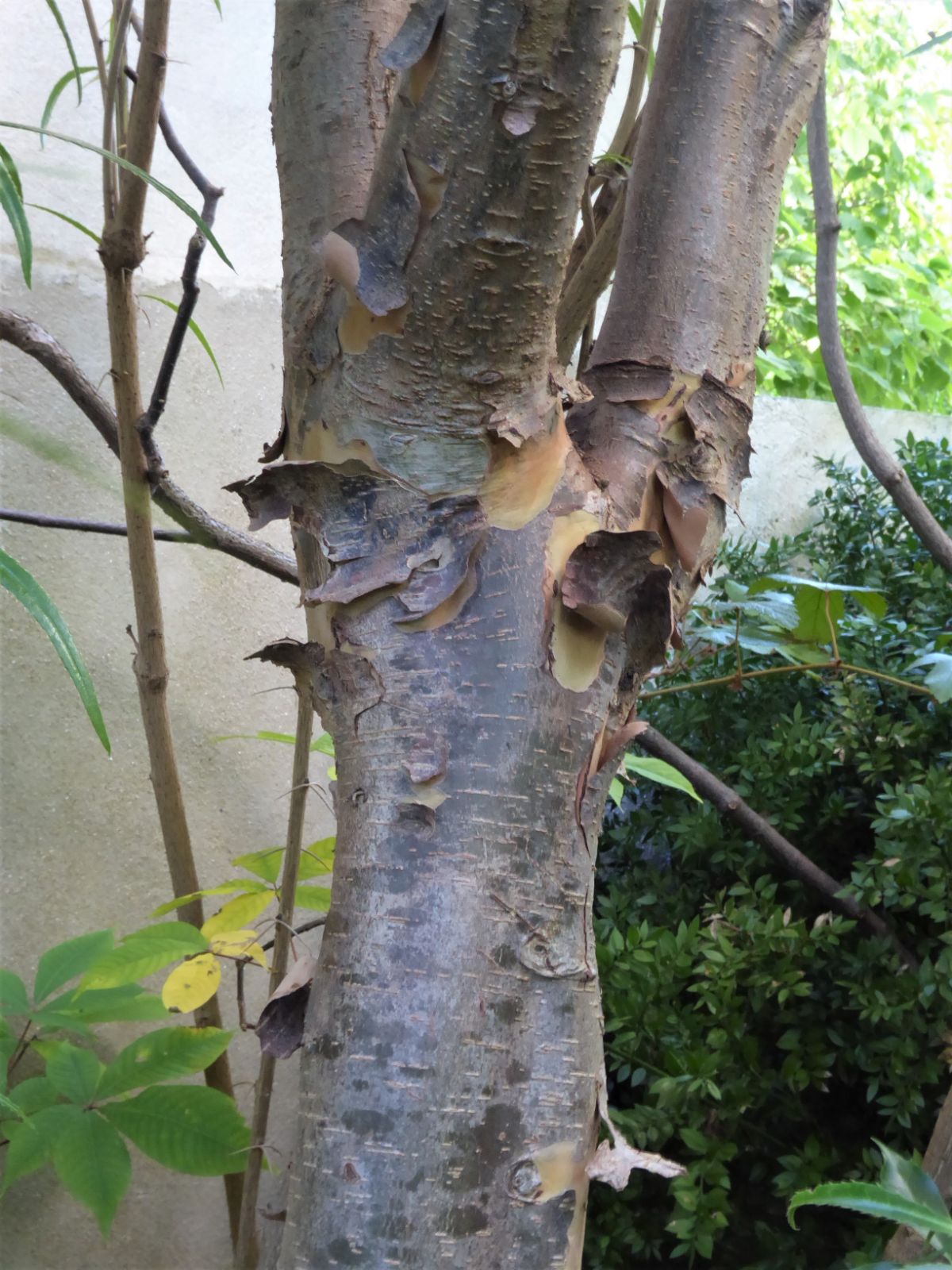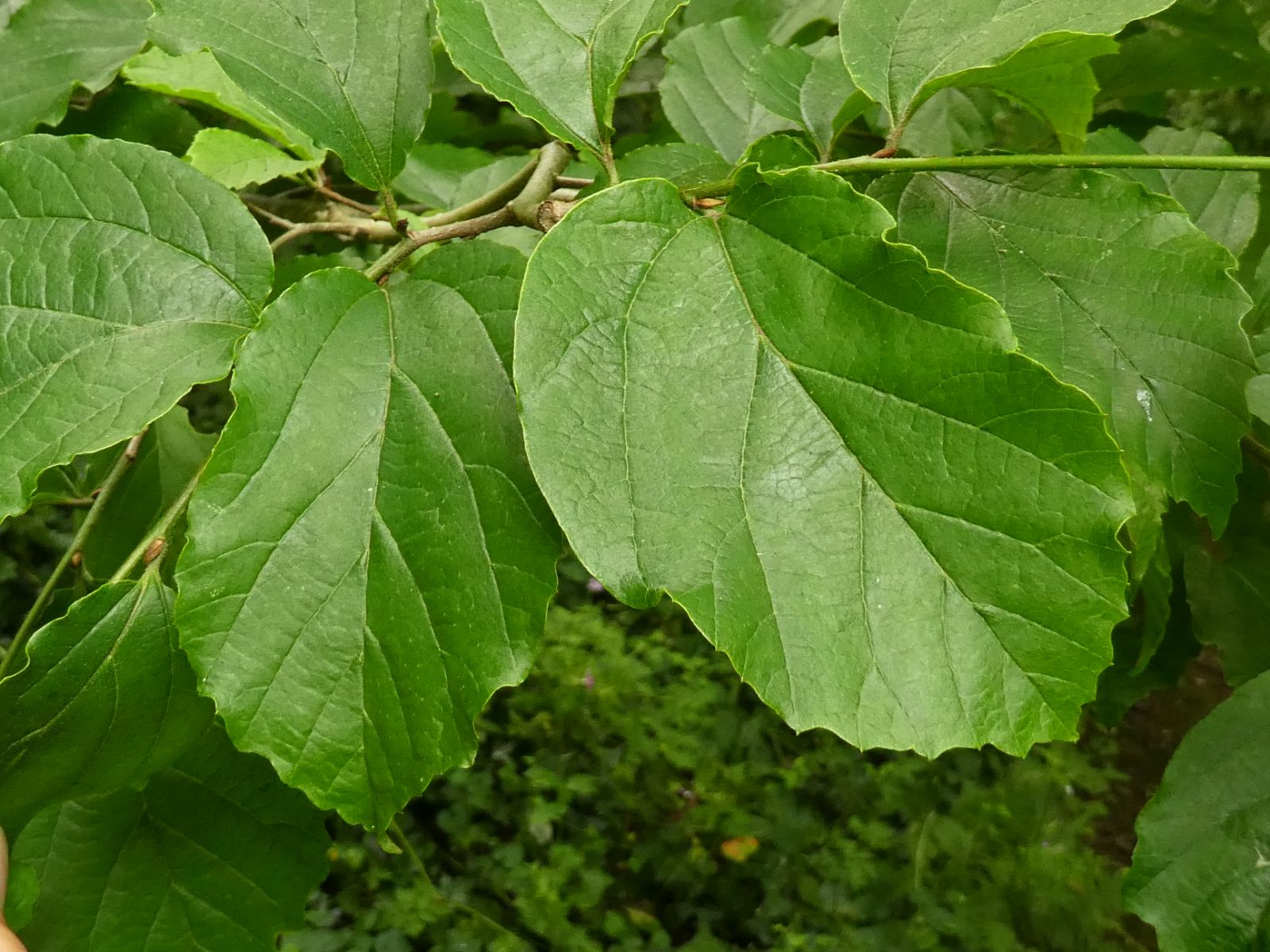Parrotia subaequalis
Sponsor
Kindly sponsored by
This genus has been sponsored and new text is being prepared.
Credits
Article from New Trees by John Grimshaw & Ross Bayton
Recommended citation
'Parrotia subaequalis' from the website Trees and Shrubs Online (treesandshrubsonline.
Genus
Synonyms
- Hamamelis subaequalis Hung T. Chang
- Shaniodendron subaequale (Hung T. Chang) M.B. Deng, H.T. Wei & X.Q. Wang
Small tree, 10–12 m, apparently resembling P. persica in many features. Leaves obovate, narrowly ovate or elliptic, 4–6.5 × 2–4.5 cm, with four to five pairs of veins on each side of the midrib, dark green above with stellate hairs on the veins, densely stellate-pubescent below, apex acute, base rounded to truncate or subcordate, margin with irregular blunt teeth, often with a purple edge; petiole 5–7 mm; stipules lanceolate. Inflorescence a terminal capitate spike with one to two male flowers at the base and four to five hermaphrodite flowers above, all surrounded by brown bracts, borne on a peduncle to 1 cm; floral cup indistinct, sepals c.3 mm; stamens 5–10, with filaments 15–20 mm, anthers 4–4.5 mm; styles c.2 mm. Capsule rounded, 8–9 mm diameter, with persistent styles and slightly enlarged floral cup. Seeds 6–7 mm, sharply pointed at each end, shiny brown. Flowering March to April, fruiting September to October (China). Chang 1960, Li et al. 1997, Zhang et al. 2003b, Andrews 2008. Distribution CHINA: Anhui (Jinzhai Xian, Jixi Xian, Shucheng Xian), southern Jiangsu (Yixing Xian), northern Zhejiang (Anji Xian). Habitat Montane forests, 600–700 m asl. USDA Hardiness Zone (5–)6–7. Conservation status Not evaluated (IUCN). Critically endangered, according to Flora of China. Illustration Andrews 2008, Li & Del Tredici 2008; NT545.
The recognition of this species as a Parrotia took some time, with it passing through Hamamelis and Shaniodendron before its close similarity to P. persica was acknowledged. It is difficult to point out features by which the two species can be reliably separated, as P. subaequalis is so far represented in cultivation only by a small population of young plants, of limited clonal diversity, that have yet to flower, and it seems to be poorly known even to Chinese botanists. It is too soon to state anything about its ultimate size or cultivation requirements, although P. persica is probably a good guide; the Chinese species’ hardiness limits have not yet been widely tested. What can be said with certainty is that it has the potential to produce spectacular autumn colours of scarlet, crimson and burgundy, as even very young plants colour magnificently. In the wild trees have been noted to have attractively exfoliating bark, generating a patchwork of green, beige and black (Li & Del Tredici 2008). In the same article, these authors have also provided a very interesting account of P. subaequalis in cultivation in China – where they have even seen it being used as penjing (bonsai)!
The introduction of another species of Parrotia to Western gardens is an exciting event and it seems that credit must be given to the Belgian nurseryman Antoine Bultinck-Meuleman of pépinière De Ceder, Evergem. In 1998 a group of French horticulturists on a tour (Ginkgo 98) visited the Nanjing Botanic Garden and were shown a plant of P. subaequalis. Despite their entreaties they were not given any propagating material at that time, but in February 2000 four young plants were received by Bultinck-Meuleman, whose requests had been more determined and persuasive than those of the others (Colin 2000). Most specimens in cultivation in Europe are derived from this stock, which has now been propagated extensively and can be found in many major collections, including individuals up to 2 m tall at Ghent University Botanical Garden, Belgium (planted 2001) and at Hergest Croft (planted 2003) (Andrews 2008). The species roots readily from summer cuttings treated with rooting hormone and placed under mist in a heated propagation unit (Li & Del Tredici 2008).
Mikinori Ogisu introduced it to Japan in 1998, and he reports (pers. comm. via R. Lancaster 2008) that a specimen planted near Osaka in that year has reached 5 m. Ogisu has distributed material from Jiangsu in both England (Andrews 2008) and the United States (D. Hinkley, R. Lancaster, pers. comms. 2008). The first plants in the United Kingdom were distributed by Ogisu in 2001, and one of these specimens is now well established and growing vigorously in Roy Lancaster’s garden, where it had reached 2 m by August 2008 (R. Lancaster, pers. comm. 2008); it has also been propagated (Andrews 2008). A plant from the same importation was passed to the National Arboretum, Westonbirt but failed to become established, and a third was donated to HRH The Prince of Wales. Another introduction from China has resulted in specimens at the Arnold Arboretum that had reached 1.5 m by 2008 (P. Del Tredici, pers. comm. 2008), having survived two winters outdoors; although not fully assessed, it seems that the species will be hardy in the Boston area (M. Dosmann, pers. comm. 2008).

